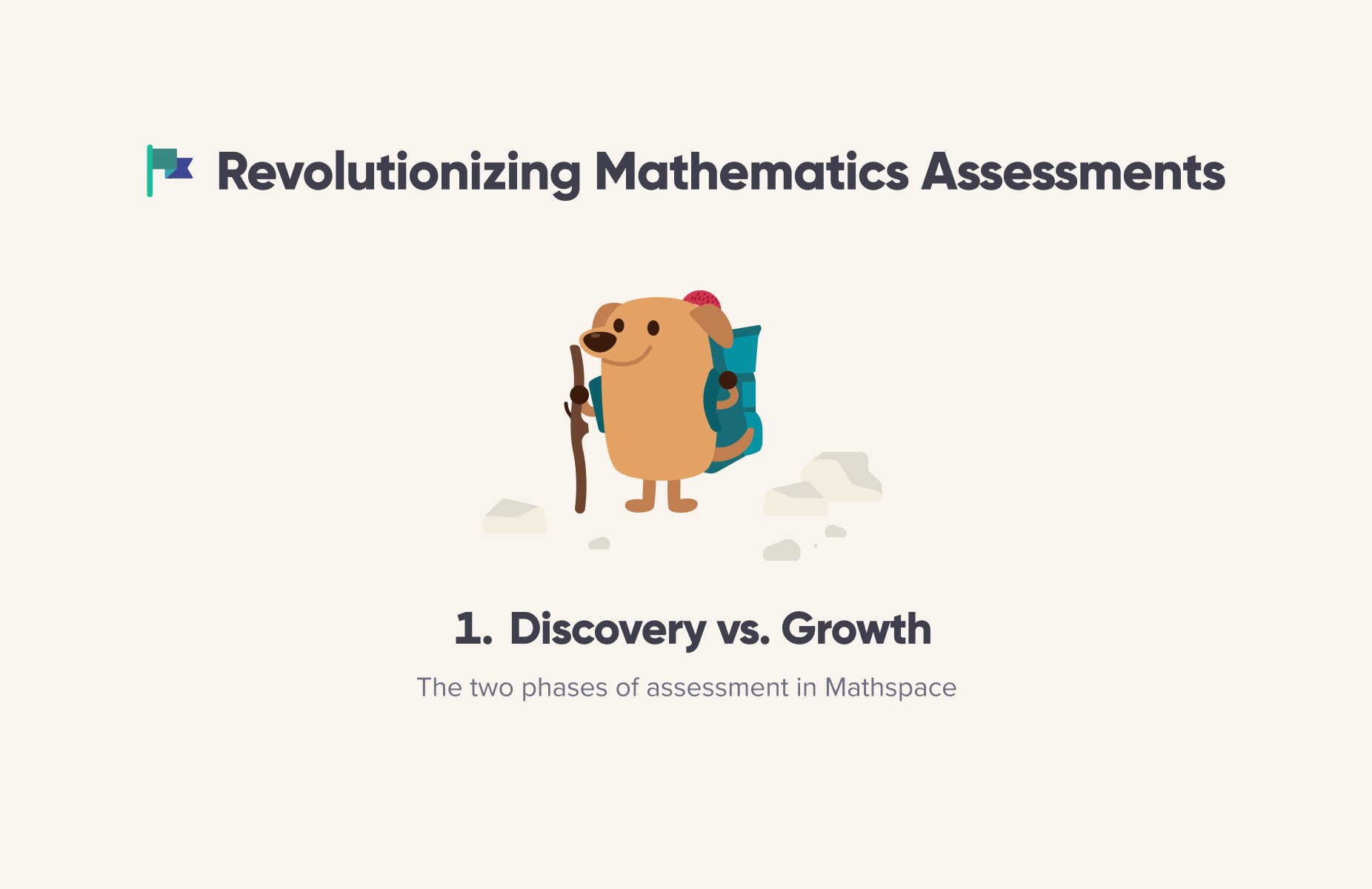Revolutionizing Mathematics Assessments Pt. 1: Discovery vs. Growth
The first of a four-part series looking at how Mathspace Check-Ins work, why they matter and how to implement them effectively. Pt. 1 covers the format of Check-Ins.

Mathematics is universally regarded as a crucial life skill. For students to be able to make a positive contribution to society, they must understand many areas of mathematics. With accelerating developments in technology and the importance of mathematics to that development, this is more true now than ever. But how do we ensure that all students have equal opportunities to develop their mathematical understanding?
At Mathspace, we asked ourselves this question and concluded that the answer is accurate and actionable assessment. So we set out to create a new method of assessment which we call Check-Ins.
This four-part series will reveal both the theory underpinning these assessments and their practical application in the classroom.
How we assess competencies
At Mathspace, we divide assessments into two distinct phases: the Discovery phase and the Growth phase. Both phases are formatted as low-stakes assessments that students complete online, but they differ in their goals.

During the Discovery phase, we use comprehensive evaluations (Discovery Check-Ins), undertaken once for each area of mathematics - number, algebra etc. Discovery Check-Ins contain 10-30 questions, depending on the topic area and the age of the student. The goal of these assessments is to determine the baseline measure of a student's knowledge and understanding. To achieve that, they have been fine-tuned through experimentation to strike a balance between accuracy and the time it takes a student to complete them.
In contrast, in the Growth phase we use much shorter assessments, consisting of either two questions (Skill Check-Ins) or five questions (Growth Check-Ins). These shorter assessments are designed to track the student's progression over time - we recommend students do one a week - and to pinpoint any areas where the student might be struggling. Because the Check-Ins in the Growth phase assess fewer skills, we can be even more confident that the resulting data is accurate.
With regular Growth and Skill Check-Ins, Mathspace provides an up-to-date measure of a student’s understanding at all time. This is a substantial change from the point-in-time data generated by high-stakes assessments such as national exams.

The next post in this series - where where we dive into why our knowledge graph is so important to the efficacy of Check-Ins - is available here: Revolutionizing Mathematics Assessments Pt. 2: Validation through Personalization.
If you would like to explore Check-Ins for yourself, you can sign up for a free student or teacher account or try our demo Check-In.

